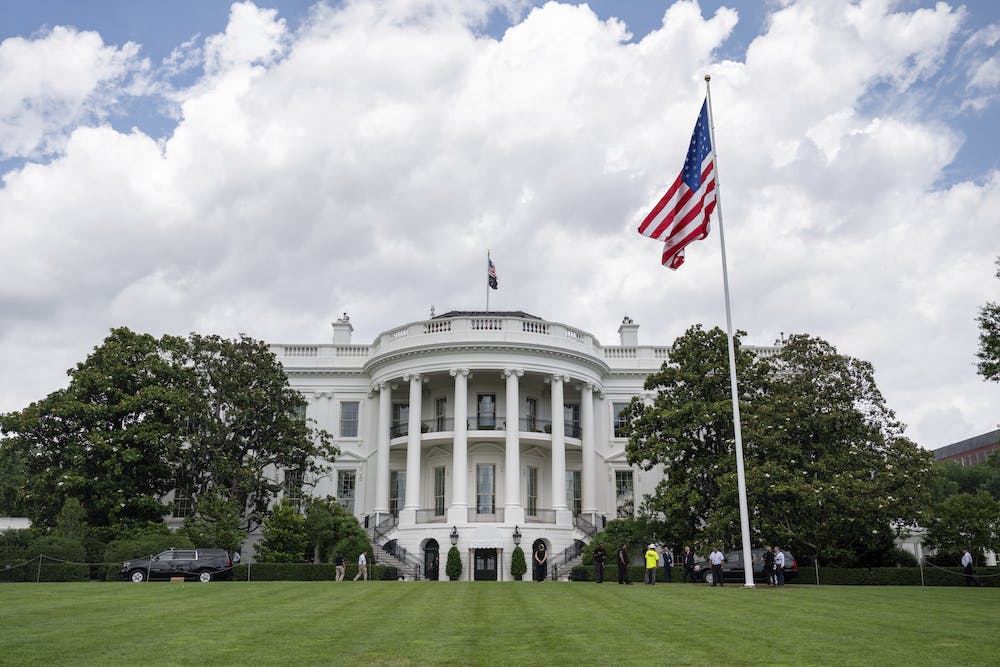AI Caucus Co-Chairs: AI is an ‘American issue’
The Congressional AI Caucus stands out as an example of bipartisanship and leveraging interest to promote knowledge.

Artificial intelligence is an exciting emerging technology that can automate mundane tasks, allowing employees to focus on higher-complexity work and improve the quality of services that government agencies provide. However, because it is an emerging technology, agencies are taking it in different directions. Some are unsure how to best allocate taxpayer dollars, and others are unsure how to best educate and inform their stakeholders about the benefits, risks, opportunities and challenges of AI.
To unify AI efforts and clear some of these hurdles, Rep. Pete Olson formed the House AI Caucus with now-former Representative John Delaney during the 115th U.S. Congress. Olson spoke with Rep. Jerry McNerney, the new co-chair of the caucus who represents California’s 9th district, at the GovernmentCIO Media & Research AI & RPA in Government CXO Tech Forum to discuss the bipartisan effort in the house to keep people informed about AI and its prospects.
“You’ll hear us say a word over and over — you don’t hear it enough in D.C.,” said Olson, who represents the 22nd Congressional District of Texas. “Bipartisan. This issue is not Democrat, Republican, liberal, conservative. It is an American issue.”
The level of interest and support for the caucus is already clear, added McNerney. Caucus meetings are typically lightly attended, he said, but AI caucus meetings average around 15 members of Congress, and the room is often “packed shoulder to shoulder” with staffers, even on “flyaway days,” when representatives and their staff usually travel to their home districts instead of staying on the Hill.
“People want to know what this is,” he said. “People want to know what the future looks like … To educate Members of Congress about what this means will be very vital to the future of this program.”
One reason AI caucus meetings are so well attended is due to concerns that the rise of AI will eliminate a large percentage of American jobs. Olson reassured the audience that this is not the first time America learned to adapt business to changing technology, citing the number of computer hardware companies that now sell software and IT services.
“We have to control that fear,” said Olson. “Smart people … bring up AI and they say Armageddon — the destruction of society! Whoa, whoa. That’s not what this is about. These machines will never become humans…we control what they’ll do. We have to work on our biases – we have natural human biases – and keep those out of the programs.”
McNerney added that AI will replace some aspects of jobs, but the parts that cannot be replaced will not only still be important, but also can lead to new opportunities.
Another priority for the caucus is getting federal agencies to share data and cooperate on AI acceleration.
“The United States government has the wherewithal and resources to kickstart a program like AI,” McNerney said. “If we get the agencies of the government working in a way that promotes this and helps create opportunity, then we’ll see [AI] take off in a positive way.”
Olson noted that federal agencies are currently pursuing AI development independently of one another and hopes to increase communication between those programs, rather than have them “double up or triple up efforts.” He has introduced a bill that would break down these barriers and create means for agencies to collaborate on AI.
Following the theme of bipartisanship, McNerney has proposed an AI in government bill to increase AI funding and seek expertise from the private sector; the companion bill has passed the Senate, and the House Oversight Committee is due to mark the bill up soon. The bill would create AI centers of excellence and create new hiring paths in the field.
Both co-chairs said the AI caucus is here to stay.
“AI is way beyond elections and politics,” Olson said. “This is truly bipartisan. This will survive the elections coming up next November…It’s very important, and people know that.”
“There is going to be a continuing growth in this, and it could be transformative,” McNerney remarked. “We could see the health care industry transformed by artificial intelligence, we could see our cities transformed, we could see transportation and our electrical infrastructure [transformed]. All these things have a tremendous opportunity with the synergy that we’re starting to see happen.”
This is a carousel with manually rotating slides. Use Next and Previous buttons to navigate or jump to a slide with the slide dots
-

DOD Turns to Skills-Based Hiring to Build Next-Gen Cyber Workforce
Mark Gorak discusses DOD’s efforts to build a diverse cyber workforce, including skills-based hiring and partnerships with over 480 schools.
20m listen -

AI Foundations Driving Government Efficiency
Federal agencies are modernizing systems, managing risk and building trust to scale responsible AI and drive government efficiency.
40m watch -

Trump Executive Order Boosts HBCUs Role in Building Federal Tech Workforce
The executive order empowers HBCUs to develop tech talent pipelines and expand access to federal workforce opportunities.
3m read -

Navy Memo Maps Tech Priorities for the Future Fight
Acting CTO’s memo outlines critical investment areas, from AI and quantum to cyber and space, as part of an accelerated modernization push.
5m read -

DOD Can No Longer Assume Superiority in Digital Warfare, Officials Warn
The DOD must make concerted efforts to address cyber vulnerabilities to maintain the tactical edge, military leaders said at HammerCon 2025.
4m read -

New NSF Program Cultivates the Future of NextG Networks
The agency’s new VINES program looks to tackle key challenges like energy efficiency and future-proofing wireless tech.
21m watch -

Marine Corps Operation StormBreaker Slashes Software Delivery Timelines by 17x
New program aims to deliver critical digital capabilities to warfighters at the "speed of relevance" by overhauling traditional processes.
4m read -

Tracking CIOs in Trump's Second Term
Stay informed on the latest shifts in federal technology leadership as new CIOs are appointed and President Trump's second term takes shape.
6m read -

DHA CDAO Spearheads Master Data Catalog to Boost Transparency
Jesus Caban plans to boost DHA's data maturity through a new master data catalog, governance frameworks and inventory of tech tools.
5m read -

IHS Prepares to Deploy PATH EHR at Pilot Sites in 2026
IHS targets PATH EHR pilot in 2026, emphasizing governance, collaboration and interoperability as key pillars of the modernization strategy.
4m read -

Trump Orders Spark Government-Wide Acquisition Overhaul
As Trump pushes for a faster, simpler procurement system, agencies are leveraging AI and adapting strategies to meet new requirements.
5m read -

IRS Makes Direct File Code Public as Lawmakers Debate Program’s Fate
The agency sees the Direct File source code as beneficial to government digital services despite what happens with it in proposed budgets.
5m read















